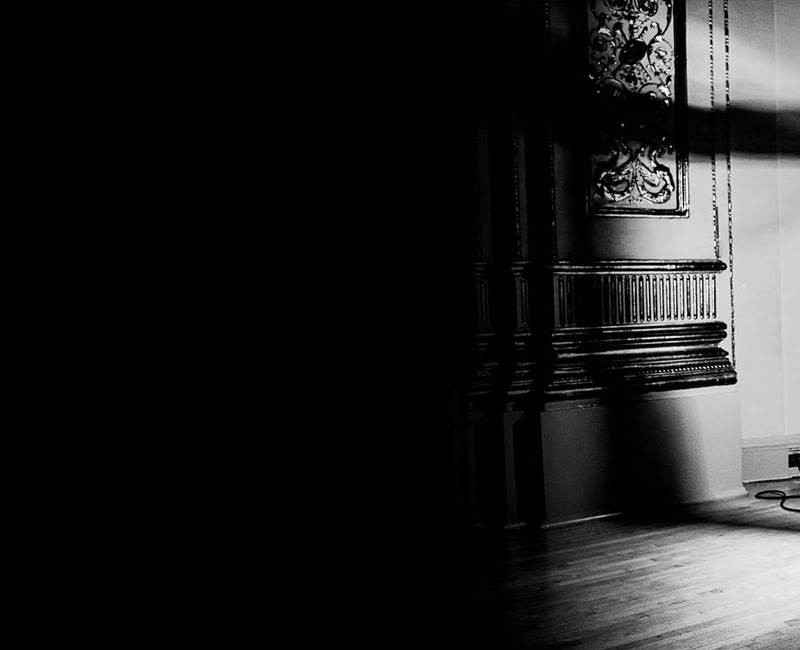Room to Play
04 Jul 2012
The Orchestra of St Luke’s may be one of New York’s finest ensembles, but in all its 38 years, it has never had a permanent home. Until now.
Susan Elliott reports on the state-of-the-art DiMenna Center
Upstairs in New York’s DiMenna Center’s Benzaquen Hall, conductor Kent Tritle and choir Musica Sacra are rehearsing an a cappella programme for their concert next Sunday afternoon. Downstairs in Cary Hall, the New York Youth Symphony is working on a Prokofiev Overture. There’s a brass quintet in the Ensemble Room, and a piano trio in Practice Room 2.
‘Earlier this week, Joshua Bell was in Benzaquen with the Academy of St Martin in the Fields,’ says Katy Clark (right), the ebullient president and executive director of the Orchestra of St Luke’s (OSL) and, by default, of its newly anointed DiMenna Center for Classical Music on Manhattan’s Lower West Side. ‘And we were down here in Cary working on the Mozart Requiem. That was incredibly fun.’
Opened just over a year ago, the DiMenna Center has seemingly overnight become Classical Music Central. With seven fully-equipped rehearsal spaces, a music library, visitor workspace, two lounges, a small café, offices, and male and female showers, it’s part clubhouse and part workplace to a vast array of musicians. These range from members of Yo-Yo Ma’s Silk Road Ensemble to the cast of Broadway’s musical Memphis and singers auditioning for the Virginiabased Wolf Trap Opera.
It’s also the official home to the Orchestra of St Luke’s – its first ever, in the 38 years since its founding as a chamber group performing in a church in Lower Manhattan. ‘I was surprised to learn that an orchestra of the stature of St Luke’s never had its own home,’ Mikhail Baryshnikov comments in a video on the OSL’s website. The OSL shares the building on West 37th Street with the famed dancer’s foundation and studios. ‘It’s extraordinarily important for artists to have their own space.’
Unlike fixed ensembles such as the New York Philharmonic or any other of the US’s full-time orchestras, many, if not most, of New York City’s classical music groups play perhaps ten concerts a year and are made up of freelancers. Among them: the American Composers Orchestra, the American Symphony Orchestra, the Brooklyn Philharmonic, Orpheus Chamber Ensemble, the New York Pops, the Riverside Symphony, and more. The Orchestra of St Luke’s is fully freelance as well, but distinguishes itself from its peers because it plays a nearly full season (about 70 concerts a year), has a core of principals that have mostly been together from the beginning, has no music director, changes the style and number of players depending on the need, and is artistically self-governing. ‘They hire and fire each other,’ quips Clark. OSL is a major US orchestra – without all the major obligations and contracts that go with it. ‘We don’t spend what we don’t have,’ says Clark simply. ‘We don’t guarantee work to anybody, and there’s no requirement to show up.’
The orchestra has long had a regular series in Carnegie Hall – as do most of the aforementioned groups – but, until now, no consistent rehearsal space. ‘It’s very hard,’ says Clark, a onetime violinist with the BBC Symphony Orchestra who has been with OSL for seven years, the first few as development director. ‘When you do a number of concerts over a season, the performance space may be constant, but when the rehearsal spaces are all different, you have to re-acclimatise each time.’
New York City has no shortage of suitable concert venues. But until March 2011 when the DiMenna Center opened, choices for rehearsal space ranged from high-priced, dimly lit church basements with bad acoustics to high-priced, dimly lit commercial rehearsal studios with creaky elevators and the kind of overhead fluorescent lighting that makes your skin look green and leaves you with a pounding headache.
Finally, in 2004, representatives from the aforementioned groups, along with the League of American Orchestras, decided to take action. ‘They came up with a report listing all the things that were lacking in the hodgepodge of spaces we were all using,’ says Clark. ‘Acoustics, lighting, security, location…
‘There was a strong desire to have a consistent rehearsal acoustic. There’s also the argument that a rehearsal space has slightly different needs than a concert acoustic. You want it to be very neutral, very clear.’ A concert hall, however, might be a bit more forgiving and certainly, in the case of Carnegie, warmer and more flattering. It was Clark who then discovered the two adjacent vacant theatres at 450 West 37th Street in 2008, housed inside the Baryshnikov structure.
‘For years we’d all get together and somebody would ask, “Has anybody found a space yet?” And everybody would groan, “No.” Finally I stumbled across the place and we were like, “Oh my God. Grab it!”.’
If the freelance ensemble reps had been involved in the planning of the new DiMenna Center, it was OSL that did the bulk of the fundraising (and now reaps the rental income), starting with a lead gift of $5m from hedge fund guru Joseph DiMenna and his wife Diana. The City of New York also pitched in $8.5m and, over time, the nowretired founding executive director Marianne Lockwood along with Clark managed to raise $37m to fund a complete renovation.
This was not without its challenges, especially since the DiMenna Center is located a few blocks from the entrances and exits to the Lincoln Tunnel (which links New York to New Jersey under the Hudson River). The larger Cary Hall is underground and so is susceptible to traffic noise. So the acousticians (Akustiks) created a self-contained box within a box that floats on rubber pads. They also had to deal in the upper rooms with dancers’ take-offs and landings.
But deal they did. The DiMenna Center is state-of-the-art and attractively appointed. With special lighting and ventilation, absolute soundproofing, and the ability to record from virtually every room, it’s no wonder that its popularity has exceeded its planners’ highest expectations.
It also probably didn’t hurt in attracting OSL’s new principal conductor, 34-year-oldPablo Heras-Casado, one of the hot rising stars of the biz. The Spanish maestro and the orchestra came together for the first time last August at the Caramoor Festival in Katonah, New York, where OSL is in residence in the summer. The chemistry must have been considerable, for within weeks he was asked to be OSL’s next principal conductor – only its fourth since its founding.
Did he know he was being considered for the job? ‘I had no idea,’ laughs the conductor. ‘All I knew was that they were one of the classiest and most distinguished ensembles in America.’ bOSL hasn’t had a principal conductor since Donald Runnicles stepped down in 2007. Several of the musicians had suggested Pablo Heras-Casado.
‘We had been thinking about it for a while,’ says Clark. ‘We’re not like the major orchestras, where we’re bereft without a main conductor and have to hire an interim. This orchestra, when it meets somebody it likes, it’s, “OK! Let’s do it!”’
Heras-Casado has signed a four-year contract. He is quite clear on his role: ‘My position is not music director,’ he says, noting that he will not be sitting in on auditions nor choosing repertoire, other than what he personally conducts.
‘It’s a musicians’ orchestra,’ he says. ‘They are the ones who care about the artistic integrity of the orchestra. They want to play together and rehearse. They like to take chances. And they play like a chamber group, even when they are a full orchestra.
’OSL earns its income both from its own concert series and as an orchestra-for-hire – albeit only for groups its artistic committee approves. You might find it at the Brooklyn Academy of Music accompanying a group of Flamenco dancers, or at Lincoln Center as backing band for Metallica or, as in late April, on stage performing for a benefit concert of The Sound of Music at Carnegie Hall.
‘It has been a very conscious decision of the orchestra to do this kind of work,’ says Clark, adding that OSL’s business model has enabled it to survive the economic downturn nicely, especially compared to permanent groups. ‘Sometimes we’ll go to the artistic committee and ask, “Do you want to do this concert?” and they’ll say no. We decide who we want to work with. We like being in control of things.’ New rehearsal space, new home, new conductor – being in control seems to be working quite well for the Orchestra of St Luke’s. Sensible governance and artistic health: who could ask for anything more?
To book tickets to Orchestra of St Luke’s concerts, visit their website at www.oslmusic.org

